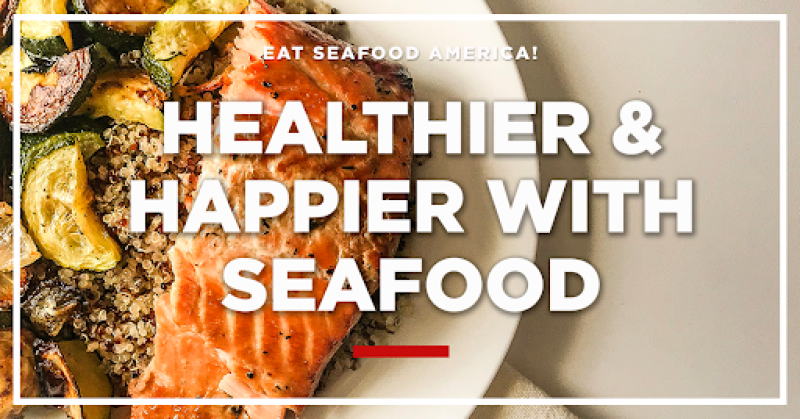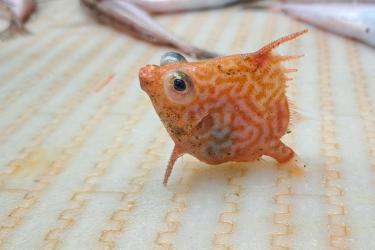For the Seafood Nutrition Partnership, seafood and community health are inextricably linked. The non-profit organization is a leader in seafood accessibility. It brings together a network of physicians, researchers, dietitians, chefs, retailers, and community leaders to empower smart seafood decisions. Healthy seafood comes from both farmed and wild-capture sources and is available at all price points. Fish and shellfish provide key beneficial nutrients that no other foods have.
Obesity, cardiovascular disease, and type 2 diabetes are on the rise in the United States. All of them can be preventable with diet and lifestyle changes, such as exercise. A diet rich in seafood can help prevent many of the chronic diseases affecting Americans. SNP aims to reduce the risks of heart disease and improve brain health and overall wellness by building awareness of seafood’s essential nutrients.
“What we eat matters for our health and our planet’s health,” says Linda Lai Cornish, founder and president of SNP. “I formed the Seafood Nutrition Partnership because the science on the nutritional benefits of seafood is very well researched, but this great knowledge was not reaching the consumers. I have a personal connection to this gap in knowledge as my family has a history of heart disease and seafood nutrition is one way for us to manage this health risk.”
SNP’s initiatives, including Little Seafoodies and Eat Seafood, America!, are making a difference—one bite at a time. “Our education initiatives have empowered many people, especially the underserved, to learn how to shop for and prepare nutritious food, and to do it affordably,” adds Cornish. “Our work is so gratifying whenever one of our participants realizes how easy and delicious it is to incorporate seafood into their meals, and that it’s good for their family’s health.”
Eating Heart Healthy
One of SNP’s very first programs was Eating Heart Healthy, an interactive cooking and nutrition workshop. It was developed in partnership with Brigham and Women’s Hospital and Roxbury Tenants of Harvard. The organization worked with women from local community organizations to reduce heart disease risks through engaging, interactive cooking and nutrition classes aimed at building skills and knowledge. All of the seafood recipes were designed to cost less than $10 to feed a family of four.
Seafood on a Budget
According to Jessica Miller, registered dietitian and Nutrition Communications Manager for SNP, “Seafood is not only an excellent source of lean protein, it contains a range of important nutrients including vitamins and healthy omega-3 fats. Seafood is the whole package your body needs for optimal wellness.” When advising stakeholders about getting seafood on the table while staying within a food budget, she suggests checking seasonality. For example, fresh Alaskan salmon is cheaper in early summer when the fish are running. SNP also points out that frozen fish and farmed seafood are available and in season year-round. Globally, aquaculture will be a major source of healthy seafood in the future; it already produces more than half of the global seafood supply.
Just as important as increasing consumption, SNP also highlights the importance of well-managed fisheries for future generations. “Sustainable seafood means that wild caught seafood comes from a well-managed fishery, and farmed seafood comes from a farm that follows responsible practices,” said Cornish. “It will be imperative for the United States and the global community to further develop sustainable aquaculture to its fullest potential to serve as a key solution for our future food security and to mitigate the effects of climate change.” For SNP, sustainable seafood is not divided by wild-capture and farmed, but by whether it is responsibly harvested and produced. Shifting the consumer viewpoint away from “wild versus farmed” helps increase seafood literacy, grocery list options, and awareness that almost every other food we eat is farmed.
Climate-Friendly Seafood
Highlighting seafood as part of a climate-friendly diet is also an aspect of SNP’s work. “Our growing global population requires innovative and scalable solutions as land-based food production nears its maximum production capability. Seafood is the solution to many of the issues we face today. It has lower impacts to the planet from a food production standpoint when compared to other foods,” added Cornish.
Many prominent health organizations recommend making fish and shellfish the main protein on your plate at least twice a week. Increasingly farmed seafood is complementing wild-capture resources to meet the need for a healthy center of the plate protein.
Learn more about seafood’s nutritional value through healthy recipes and food science


